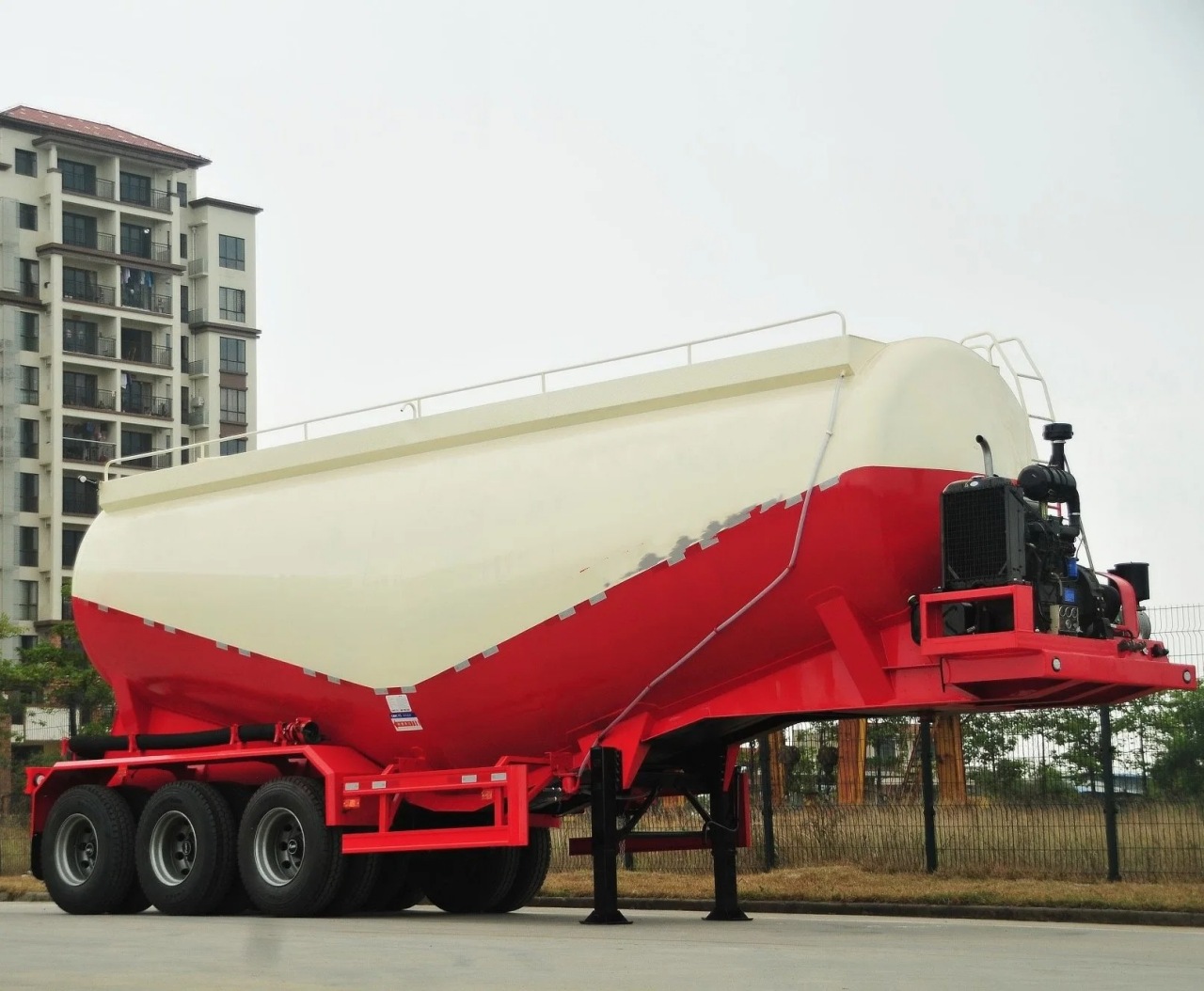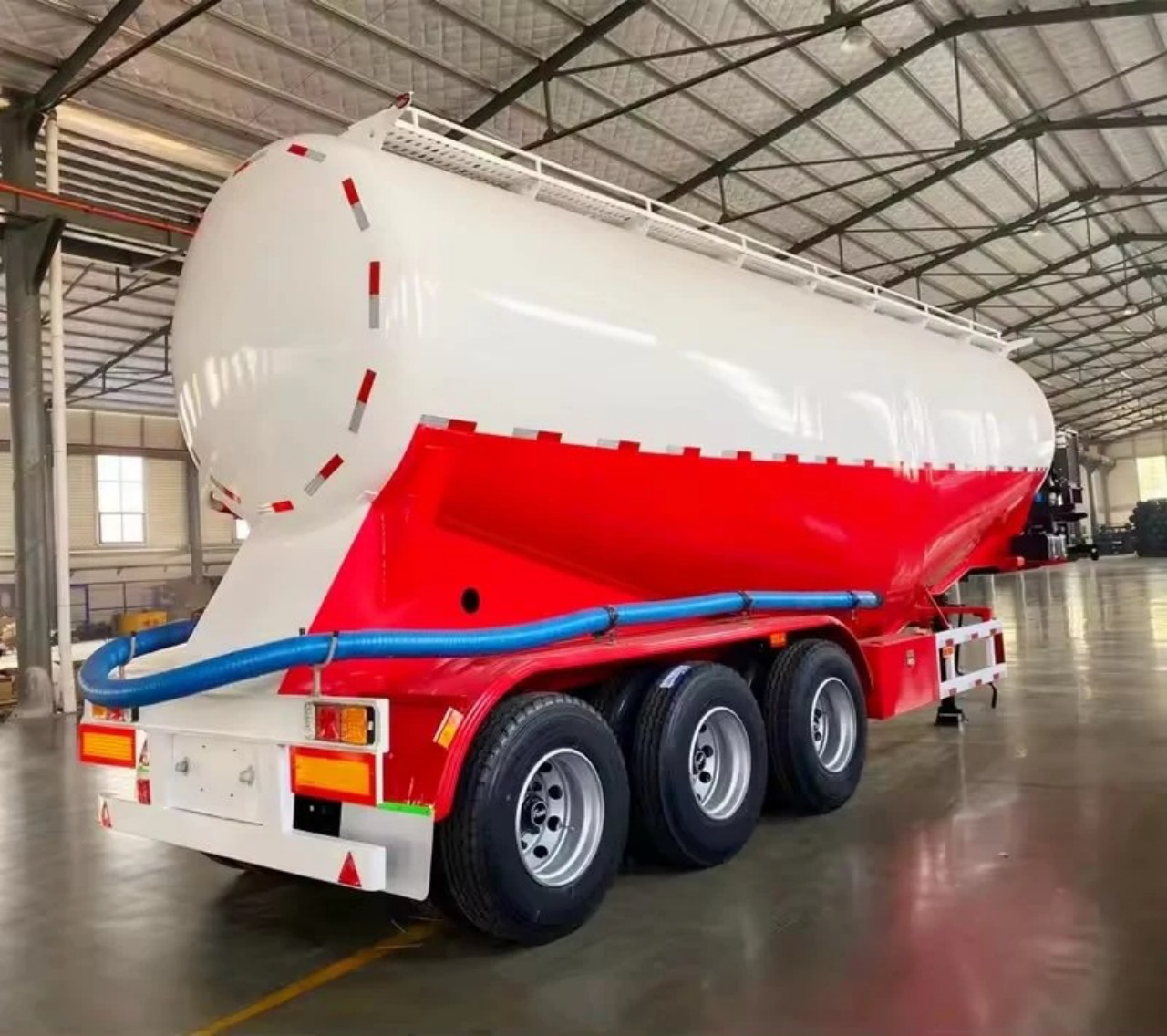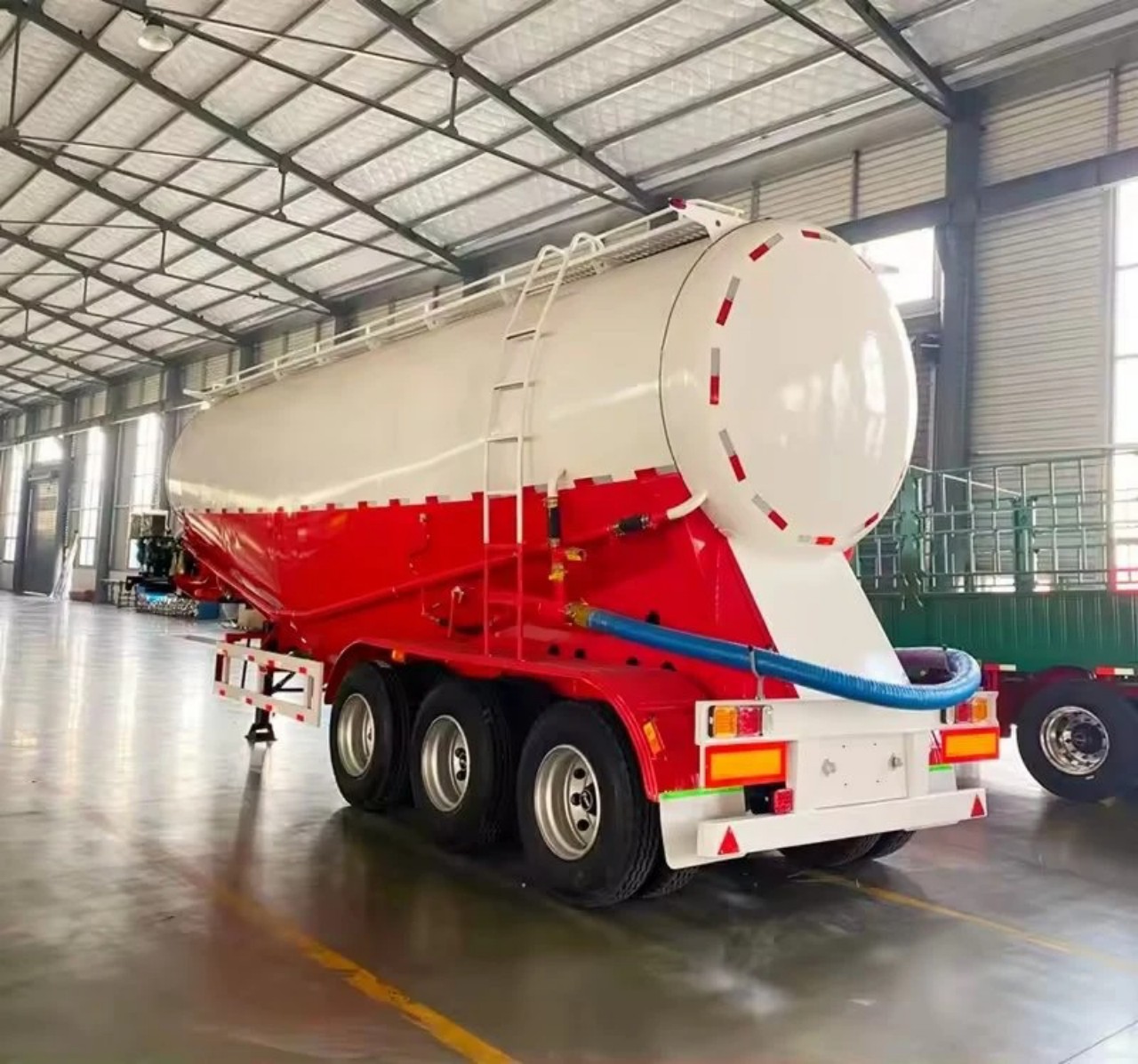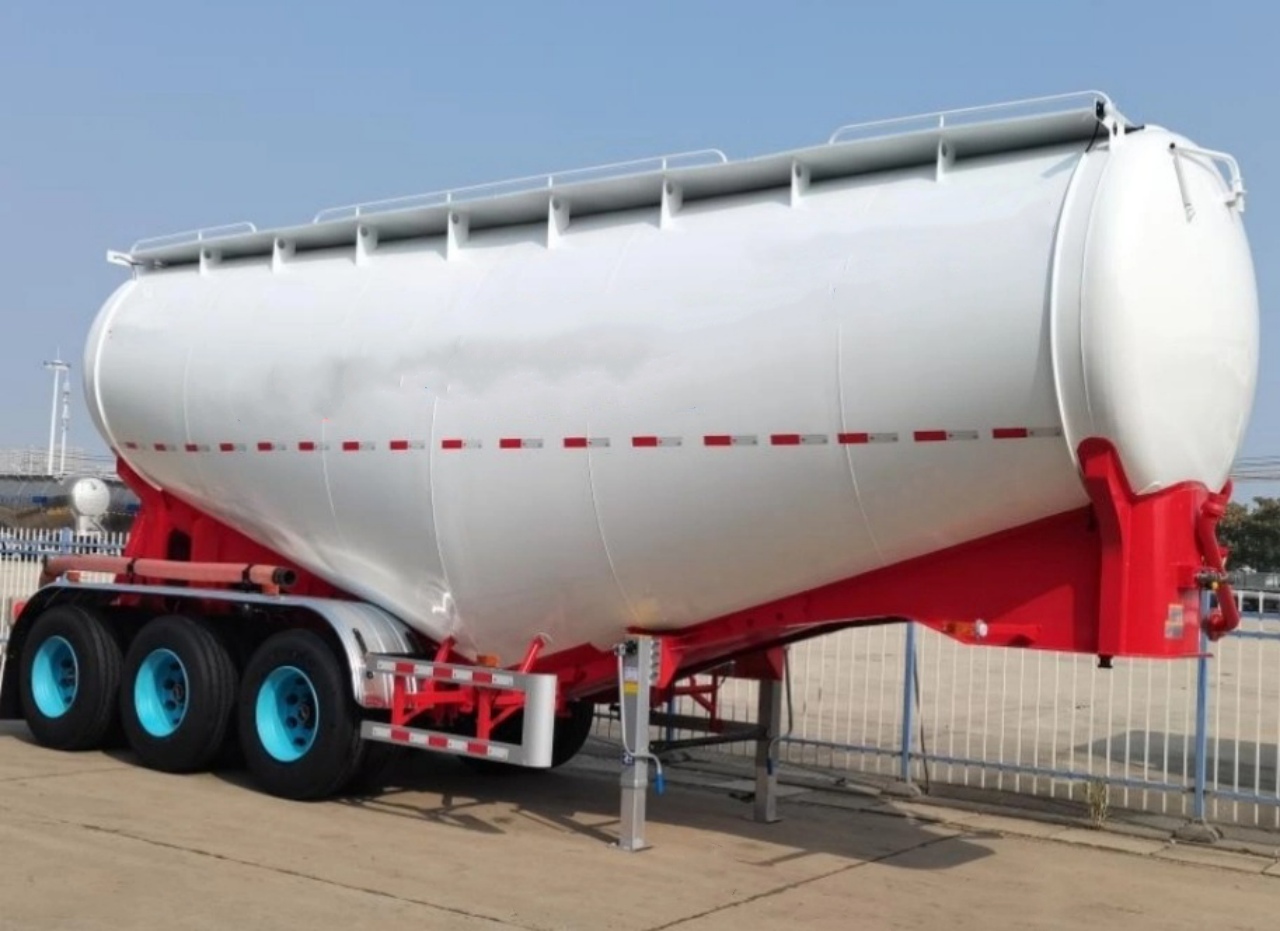Pneumatic trailers, also known as dry bulk trailers, are specialized types of tank trailers designed to transport dry, free-flowing, powdery materials such as cement, sand, flour, plastic pellets, and more. Their unique design uses compressed air to discharge the contents through a piping system, making them ideal for environments where efficient, contamination-free unloading is critical. One of the most common questions among shippers, logistics coordinators, and fleet managers is: What size are pneumatic trailers?
This article provides a detailed look at the various sizes of pneumatic trailers, including their capacities, dimensions, and factors that affect sizing.
Standard Sizes of Pneumatic Trailers
Pneumatic trailers come in a range of sizes to suit different transport requirements. While regional variations exist based on road regulations and axle weight limits, most pneumatic trailers fall within several standard size categories.
1. Capacity (Volume)
The most common way to classify pneumatic trailers is by their capacity, typically measured in cubic feet (cu ft) or cubic meters (m³). Here’s a breakdown of standard capacity sizes:
- Small Pneumatic Trailers:
- 900–1,050 cu ft (approx. 25–30 m³)
- Used for dense materials or short-distance hauls
- More maneuverable, often used in urban or confined areas
- Medium Pneumatic Trailers:
- 1,100–1,300 cu ft (approx. 31–37 m³)
- A balance between payload and mobility
- Commonly used across various industries
- Large Pneumatic Trailers:
- 1,400–1,650 cu ft (approx. 40–46 m³)
- Designed for lighter, lower-density materials
- Ideal for maximizing payload in long-haul transport
- Extra-Large Pneumatic Trailers:
- 1,700–2,000+ cu ft (approx. 48–56+ m³)
- Specialized for very lightweight materials like plastic pellets
- May be subject to regional regulations due to size and weight
The choice of trailer size depends on the density of the material being transported. Denser materials, like cement or sand, require smaller volume trailers to remain within legal weight limits, while lightweight materials can be carried in larger volume trailers.
Dimensional Specifications
In addition to internal volume, pneumatic trailers have specific physical dimensions, which are important for loading, route planning, and compliance with transport laws.
2. Length
The overall trailer length typically ranges from:
- 30 feet (9.1 meters) for small trailers
- 42–45 feet (12.8–13.7 meters) for standard trailers
- 48–53 feet (14.6–16.1 meters) for larger or high-volume trailers
Longer trailers offer greater capacity but may have limited maneuverability and may be subject to length restrictions on certain roads.
3. Height
- Pneumatic trailers generally have a height of 12.5 to 13.5 feet (approx. 3.8 to 4.1 meters), including the piping and dome structures.
- This height must be considered when accessing loading/unloading areas, underpasses, or bridges.
4. Width
- The width of most pneumatic trailers conforms to standard road vehicle widths: 8.5 feet (2.6 meters).
- This ensures compatibility with standard lanes and loading docks.
Weight Ratings
Trailer weight is another crucial specification:
- Unloaded (tare) weight: typically 10,000–12,000 lbs (4,500–5,400 kg).
- Maximum Gross Vehicle Weight Rating (GVWR): varies by region but often up to 80,000 lbs (36,287 kg) in the U.S.
The payload capacity (the weight of the dry bulk material it can carry) is calculated by subtracting the trailer’s tare weight from the maximum GVWR. As such, even a high-capacity trailer cannot be filled with heavy material if it would exceed road weight limits.
Types of Pneumatic Trailers by Configuration
1. Single-Compartment Trailers
- Designed for 1 material per trip.
- Simpler plumbing and lighter weight.
- The most common configuration for cement and sand.
2. Multi-Compartment Trailers
- Divided into 2 or more internal compartments.
- Used to haul multiple materials at once without cross-contamination.
- Slightly heavier due to added plumbing and internal dividers.
3. Straight Frame vs. Drop Frame
- Straight Frame: Offers simplicity and durability, common for smaller trailers.
- Drop Frame: Lower deck for better stability and higher volume. Often used for larger, lighter materials.
Factors That Influence Trailer Size Selection
Choosing the right pneumatic trailer size involves several key considerations:
1. Material Density
- High-density materials like cement (~90 lb/ft³) require smaller capacity trailers to stay under weight limits.
- Low-density materials like plastic pellets (~35 lb/ft³) can be transported in larger-capacity trailers.
2. Transport Distance
- Long-haul routes benefit from high-volume trailers to maximize efficiency.
- Urban or local routes may require smaller trailers for ease of maneuvering.
3. Regulations and Road Limits
- Axle weight limits and dimensional restrictions vary by country and even state.
- Oversized trailers may require permits or specific routes.
4. Unloading Facilities
- Pneumatic trailers need compatible unloading equipment.
- Larger trailers may not be compatible with older or smaller unloading sites.
5. Fleet Considerations
- Standardizing trailer sizes across a fleet can reduce maintenance complexity.
- Specialized operations might need a mix of sizes for flexibility.
Custom and Specialized Designs
Some operators require pneumatic trailers designed for specific purposes:
- Food-grade pneumatic trailers: Made with stainless steel and special coatings for sanitary transport of flour, sugar, etc.
- High-pressure discharge trailers: Designed for rapid unloading or long hose runs.
- Insulated or heated trailers: For materials sensitive to temperature or moisture.
These specialized trailers can have customized size specifications depending on the application.
Conclusion
Pneumatic trailers come in a wide range of sizes, with volumes typically ranging from 900 to 2,000+ cubic feet, lengths from 30 to 53 feet, and varying configurations based on the type and density of material transported. Selecting the right size involves balancing capacity, weight limits, route requirements, and operational efficiency.
For businesses involved in dry bulk transport, understanding pneumatic trailer sizes is essential to optimize costs, ensure compliance with regulations, and maintain reliable delivery schedules. Whether you’re transporting cement across a construction site or hauling plastic pellets across state lines, there’s a pneumatic trailer size that fits your needs.





